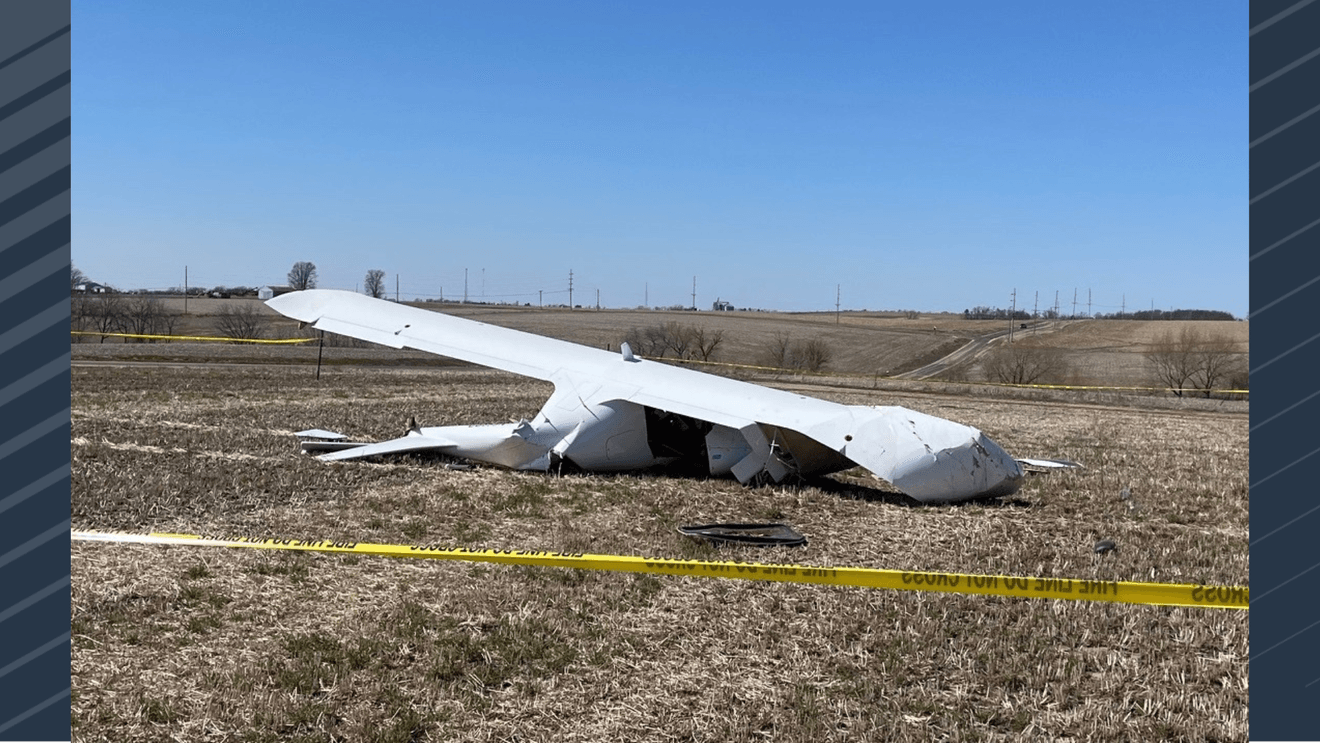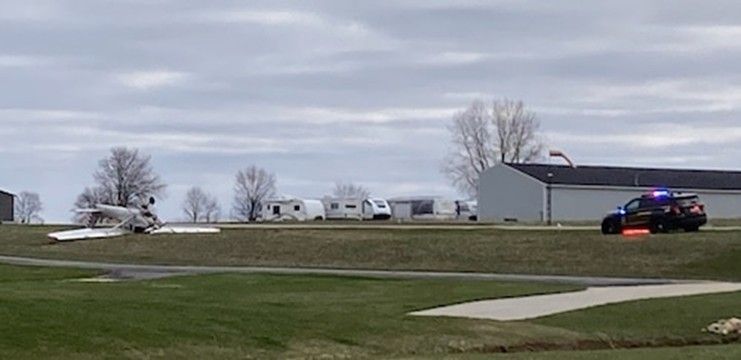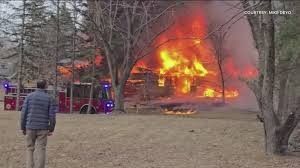ARFF Daily News
Published on:
Wednesday the 9th of April, 2025
Single-engine airplane crashes at Platteville Municipal Airport
by Samantha Calderon
PLATTEVILLE, Wis. -- A single-engine airplane crashed at the Platteville Municipal Airport on Tuesday afternoon, according to a statement from the City of Platteville.
The crash occurred west of the runway, and the pilot, who was the only person aboard, was transported to a nearby hospital after receiving emergency medical services at the scene.
The Platteville Fire Department, Grant County Sheriff's Office, the County Highway Department, Platteville Police Department and Airport Management were all deployed to the scene.
"We will be working closely with local authorities and the FAA to ensure a thorough investigation, and to address any necessary clean-up efforts. We will notify the public when the airport is clear and air traffic operations can safely resume," said Airport Commissioner Robert Gates.
An investigation is underway, and the City will provide further updates as new information becomes available.
https://fox47.com/news/local/single-engine-airplane-crashes-at-platteville-municipal-airport

Plane lands upside down at West Michigan airport
By John Agar
OTTAWA COUNTY, Mi – Both occupants of a single-engine airplane escaped injury Tuesday, April 8, after it flipped over while landing, police said.
The Cessna 180 was landing at Ottawa Executive Airport – off Byron Road, extending just south of I-196 – around 9 a.m. when the plane sustained a problem.
A 911 caller reported that a plane had crashed. Ottawa County sheriff’s deputies found the plane upside down on the shoulder of the runway. Both occupants were already out when rescuers reached the scene.
Both declined medical treatment, police said.
Police were told that the plane experienced an issue during landing and it overturned.
Sheriff’s deputies are investigating. The investigation will be turned over to the Federal Aviation Administration.

Dispatchers recall Brooklyn Park plane crash, and how every second matters
Dispatchers responded to 85 emergency calls in five minutes.
Author: Jessica Hart
MINNEAPOLIS — In five minutes, Hennepin County dispatchers received 85 calls about the Brooklyn Park plane crash.
“On an average of 12 hours, I take 85 to over 100, but that’s over 12 hours not five minutes,” said Public Safety Telecommunicator Jayme Beerling.
Beerling was in the middle of training a new employee when all the phones started to ring.
“I answered and it was a woman telling me a plane fell out of the sky,” Beerling said. “I actually was the first person to enter a call for the airplane.”
Beerling has been working with the county for five years. Her colleague Stephanie McNeill has been there for 11 years.
“You never know what you’re going to get,” McNeill said. “All of sudden I hear ringing that just keeps going, so I look over at my phone screen, and we at that point probably had about 18 to 20, 911 lines light up.”
McNeill said they had more calls on the screen than they had people to answer them.
“You have to triage and prioritize the information that you’re getting,” she said. “With that incident I was usually on the phone with somebody for maybe 15 to 20 seconds if they didn’t have any additional information other than a plane hit the house, I told them help is on the way, we’re coming, disconnected with them and got to the next call.”
Beerling said she took about 10 calls related to the crash.
“Without us it’s life or death. If there isn’t anyone sitting in these consoles no one gets started,” Beerling said. “I am here to be a conduit to help the people calling and they are my community, so being able to do this job is so immensely rewarding.”
In those moments, Beerling said they rely on their training to work as efficiently as possible.
“Seconds count,” she said. “It’s kind of, don’t think just do it.”
Through it all, they remain calm.
“I would say the atmosphere was controlled chaos. It was loud, the speaker was constantly going off until we got the police department on scene,” McNeill said. “It’s kind of something where you compartmentalize what the calls are and you can’t react emotionally to them.”
“I have the immense privilege of talking to people in their worst moments and being that calm, steady, voice to get them through it,” Beerling said.
McNeill said within those first few minutes of the plane crash, there was a lot of coordinating happening between dispatchers.
“We have different radio channels that we can use, and it was a lot of coordinating ‘hey, where are we putting the police department? What radio channel are they going to? What radio channel are we doing the fire department on?’ So, it was a lot of organized chaos with shouting back and forth just trying to make a plan and making sure everybody was on board with that plan,” McNeill said.
McNeill said she is really proud of the Saturday team for responding quickly and taking on extra tasks.
Both McNeill and Beerling have previously responded to plane crashes.
And, if responding to 85 calls in five seems overwhelming, for these ladies, it’s just another Saturday.
https://www.kare11.com/article/news/local/dispatchers-recall-brooklyn-park-plane-crash/89-22ac7817-95aa-4bf3-90d2-dd618f260203

NTSB Prelim: Cessna 525
Witnesses Reported They Saw The Airplane In A Descending, Right Bank Turn
Location: Mesquite, TX Accident Number: CEN25FA119
Date & Time: March 13, 2025, 07:33 Local Registration: N525CZ
Aircraft: Cessna 525 Injuries: 1 Fatal
Flight Conducted Under: Part 91: General aviation - Positioning
On March 13, 2025, about 0733 central daylight time, a Cessna 525A airplane, N525CZ, was destroyed when it was involved in an accident near Mesquite, Texas. The pilot was fatally injured. The airplane was operated under the provisions of Title 14 Code of Federal Regulations Part 91 as a positioning flight.
According to the airplane’s owner/operator, the pilot intended to depart the Mesquite Metro Airport (KHQZ), Mesquite, Texas, and was en route to Addison Airport (KADS), Dallas, Texas, to pick up passengers, and continue on to an undetermined destination. The fixed based operator manager at KHQZ stated that the pilot requested a fuel top off before departure, and the airplane was fueled with 224 gallons of Jet-A fuel.
The KHQZ tower controller stated that the airplane was cleared to KADS via a left downwind departure which would have involved a left climbing turn on departure. ADS-B flight track data showed that after the airplane departed to the south from runway 18, at 0733:21, it entered a right turn and climbed to about 950 ft mean sea level, or about 500 ft above ground level. At 0733:45, the airplane began a descent while still in a right turn and impacted terrain. A postimpact fire ensued. The last recorded point was at 0733:52, with an estimated flight time of 31 seconds.
The pilot was in radio communications with the tower controller at KHQZ, and no distress calls were received from the pilot. Witnesses reported they saw the airplane in a descending, right bank turn. There were no reports of fire or smoke trailing the airplane. The airplane impacted a heavily wooded area with several winding creeks to the southsouthwest of KHQZ. The airplane was fragmented, and the debris path was about 450 ft in length, oriented on a magnetic heading of 270°. A postimpact fire consumed portions of the airplane. All major components were located in the debris path.
The airplane was equipped with a cockpit voice recorder (CVR). The CVR was recovered from the empennage section of the airplane and was sent to the National Transportation Safety Board Vehicle Recorders Laboratory, Washington, DC, for processing and readout. In addition, the airplane’s engines were equipped with Full Authority Digital Engine Control (FADEC) modules which were located and shipped to the manufacture’s facility for data download. The wreckage was recovered from the accident site and transported to a secure location for further examination.
According to information on file with the Federal Aviation Administration, the pilot held a commercial pilot certificate with ratings for airplane single-engine land, airplane multi-engine land, and instrument airplane. He had several type ratings including one for single pilot operations of a Cessna 525, issued on December 16, 2018. On his most recent application for medical certificate, dated December 8, 2023, the pilot reported he had flown about 6,800 total hours, and listed his occupation as a self-employed pilot.
FMI: www.ntsb.gov

Today in History
73 Years ago today: On 9 April 1952 Japan Air Lines flight 301, a Martin 2-0-2 named "Mokusei", hit terrain on Oshima Island, killing all 37 occupants.
Date: Wednesday 9 April 1952
Time: c. 08:00
Type: Martin 2-0-2
Owner/operator: Japan Air Lines - JAL, lsf Northwest Orient Airlines
Registration: N93043
MSN: 9164
Fatalities: Fatalities: 37 / Occupants: 37
Other fatalities: 0
Aircraft damage: Destroyed, written off
Category: Accident
Location: Mihara Volcano - Japan
Phase: En route
Nature: Passenger - Scheduled
Departure airport: Tokyo-Haneda Airport (HND/RJTT)
Destination airport: Osaka-Itami Airport
Confidence Rating: Information is only available from news, social media or unofficial sources
Narrative:
Japan Air Lines flight 301, a Martin 2-0-2 named "Mokusei", hit terrain on Oshima Island, killing all 37 occupants.
The aircraft, leased from Northwest Airlines, operated on a flight from Tokyo-Haneda Airport to Fukuoka with an en route stop at Osaka-Itami Airport.
At 07:57, the flight reported that passing in the clouds at an altitude of 6,000 feet, estimating over Oshima Island at 08:07 . However, the aircraft disappeared just after 07:59.
The wreckage was located the following day on Oshima Island at an elevation of 2000 feet.

